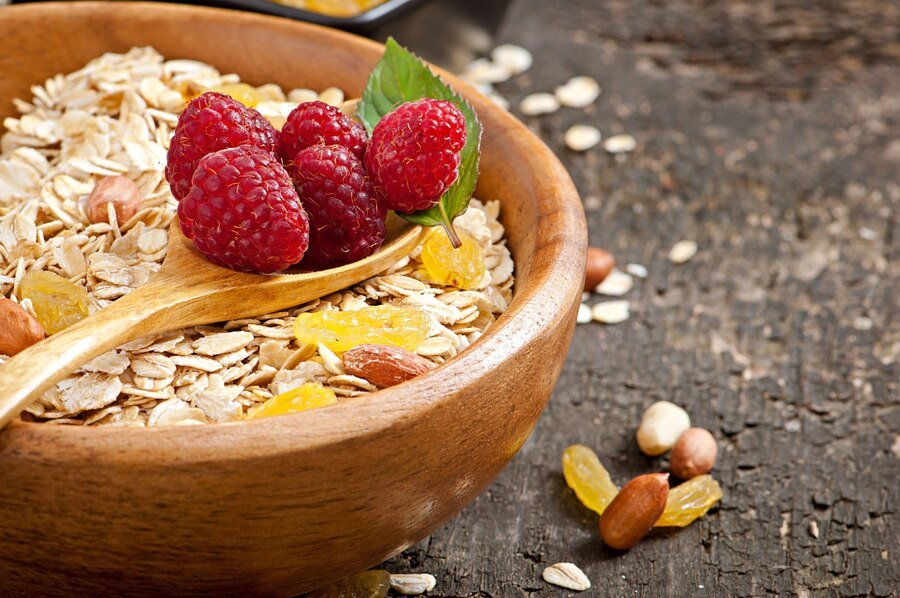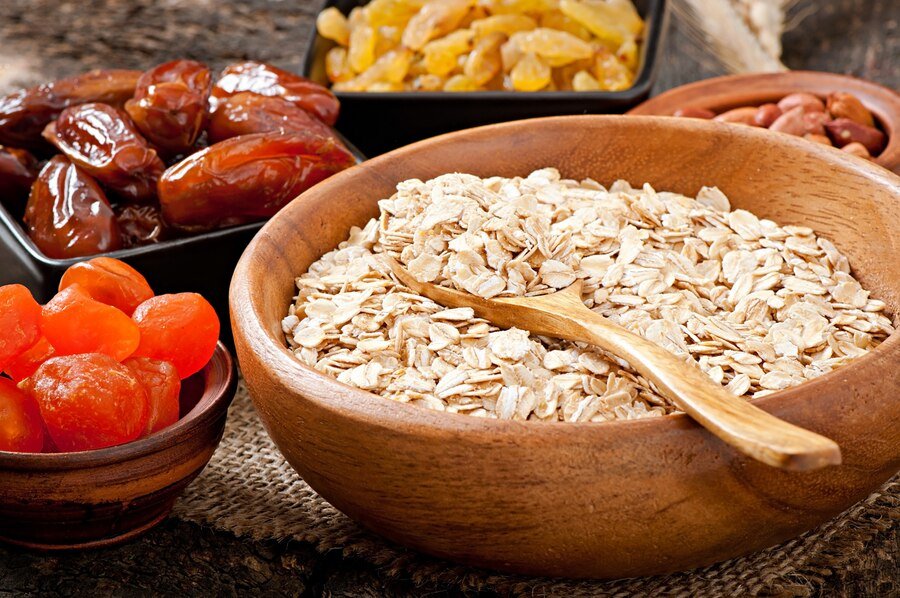FOOD
Ancient Grains in a Healthy Cereal
Ancient Grains Have you ever wondered what makes some cereals healthier than others? It often comes down

Have you ever wondered what makes some cereals healthier than others? It often comes down to the ingredients, particularly the grains used. Ancient grains have been gaining popularity as a key ingredient in health-conscious cereals. But what exactly are ancient grains, and why are they becoming a staple in our breakfast bowls? Let’s dive in and explore!
History of Ancient Grains
Ancient grains have been around for thousands of years, deeply rooted in the diets of ancient civilizations. Unlike modern grains, which have been selectively bred and genetically modified for higher yields, ancient grains remain largely unchanged from their original forms. This makes them a more natural and potentially healthier choice.
Quinoa
Quinoa, often hailed as a superfood, is a complete protein, meaning it contains all nine essential amino acids. Originating from the Andes region of South America, it has been a staple food for the Incas for centuries.
Amaranth
Amaranth was a major food crop of the Aztecs. It’s rich in protein and micronutrients like iron and calcium. Its slightly nutty flavor makes it a versatile ingredient in cereals and other dishes.
Spelt
Spelt, an ancient relative of wheat, dates back to around 5000 BC. It’s high in fiber, protein, and essential nutrients, offering a robust, nutty flavor.
Farro
Farro, also known as emmer wheat, was a favorite of the ancient Romans. It’s packed with fiber, protein, and antioxidants, making it a nutritious addition to any cereal.
Millet
Millet has been cultivated for over 10,000 years in regions of Africa and Asia. It’s gluten-free and rich in magnesium, which is crucial for heart health.
Teff
Teff, a tiny grain from Ethiopia, is a nutritional powerhouse. It’s high in protein, calcium, and resistant starch, which is beneficial for blood sugar management.
Nutritional Benefits of Ancient Grains
Ancient grains are celebrated for their exceptional nutritional profiles. They are typically rich in fiber, which aids digestion and helps keep you feeling full longer. They are also high in protein, essential for muscle repair and growth, and packed with vitamins and minerals that support overall health.
Improved Digestion
The high fiber content in ancient grains promotes healthy digestion, preventing constipation and promoting regular bowel movements.
Weight Management
Because ancient grains are nutrient-dense and filling, they can help in weight management by reducing overall calorie intake without sacrificing nutrition.
Lower Risk of Chronic Diseases
The antioxidants and phytochemicals found in ancient grains can reduce inflammation and lower the risk of chronic diseases such as heart disease, diabetes, and cancer.
Ancient Grains in Breakfast Cereals
The cereal industry has embraced ancient grains, recognizing their health benefits and appealing flavors. Brands like Kashi, Nature’s Path, and Purely Elizabeth feature cereals made with quinoa, amaranth, spelt, and more. These cereals provide a nutritious start to the day, combining the wholesome benefits of ancient grains with the convenience of ready-to-eat breakfast options.
Making Your Own Healthy Cereal
Creating your own cereal at home is simple and allows you to control the ingredients. Here’s a basic recipe to get you started:
Ingredients:
1 cup rolled oats
1/2 cup quinoa flakes
1/4 cup amaranth
1/4 cup millet
1/4 cup dried fruit (raisins, cranberries, etc.)
1/4 cup nuts or seeds (almonds, chia seeds, etc.)
Honey or maple syrup for sweetness
Instructions:
Mix all the dry ingredients in a large bowl.
Add a drizzle of honey or maple syrup if desired.
Store in an airtight container.
Serve with your choice of milk or yogurt.
Choosing the Right Ancient Grains
When selecting ancient grains, opt for organic varieties when possible to avoid pesticides and GMOs. Check the packaging for certifications and ensure the grains are whole and not overly processed.
Incorporating Ancient Grains into Your Diet
Adding ancient grains to your diet is easier than you might think. Start with breakfast cereals, then explore other meals like salads, soups, and side dishes. For example, replace rice with quinoa or use farro in your next stew for a nutritious twist.
Comparing Ancient Grains to Modern Grains
Ancient grains often outshine modern grains in terms of nutrition. They generally contain more fiber, protein, and micronutrients. Moreover, they are less likely to be genetically modified, offering a more natural and healthful choice.
Cultural Significance
Ancient grains hold significant cultural value. They were once central to the diets of ancient civilizations and are still used in traditional dishes today. For example, teff is used to make injera, a staple in Ethiopian cuisine.
Economic Impact
The rising demand for ancient grains has positively impacted the agricultural sector. Farmers are now cultivating these grains more widely, responding to market trends that favor organic and health-focused foods.
Environmental Benefits
Ancient grains are often more sustainable than modern grains. They typically require fewer resources and can thrive in poor soil conditions, contributing to biodiversity and reducing the environmental footprint of agriculture.
Potential Allergies and Considerations

While many ancient grains are gluten-free, some, like spelt and farro, contain gluten. Always check for potential allergens and consult with a healthcare provider if you have specific dietary concerns.
Conclusion
Incorporating ancient grains into your cereal and overall diet can significantly enhance your nutritional intake and offer numerous health benefits. These grains provide a link to our agricultural past while supporting a sustainable and health-conscious future. So, why not give them a try?
FAQs
Are ancient grains gluten-free?
Some ancient grains are gluten-free, such as quinoa, amaranth, millet, and teff. However, others like spelt and farro contain gluten.
How do ancient grains compare to regular grains in terms of cost?
Ancient grains can be more expensive than modern grains due to lower yields and higher production costs. However, the health benefits often justify the price difference.
Can ancient grains help with weight loss?
Yes, the high fiber and protein content in ancient grains can aid in weight management by keeping you full longer and reducing overall calorie intake.
Are ancient grains suitable for children?
Absolutely! Ancient grains are packed with essential nutrients that can support a child’s growth and development. Always introduce new foods gradually and monitor for any allergic reactions.
How should ancient grains be stored?
Store ancient grains in a cool, dry place in airtight containers to maintain their freshness. For longer shelf life, you can also refrigerate or freeze them.
Table of Contents
-

 Business8 months ago
Business8 months agoSepatuindonesia.com | Best Online Store in Indonesia
-

 Technology4 months ago
Technology4 months agoTop High Paying Affiliate Programs
-

 Tech8 hours ago
Tech8 hours agoUnderstanding thejavasea.me Leaks Aio-TLP: A Comprehensive Guide
-

 Tech8 months ago
Tech8 months agoAutomating Your Window Treatments: The Advantages of Auto Blinds
-

 Tech8 months ago
Tech8 months agoUnleash Your Potential: How Mecha Headsets Improve Productivity and Focus
-

 Instagram2 years ago
Instagram2 years agoFree Instagram Follower Without Login
-

 Business11 months ago
Business11 months agoFollow These 5 Tips To Avail Personal Loans At Lower Interest Rates
-

 Instagram2 years ago
Instagram2 years agoFree Instagram Auto Follower Without Login




















